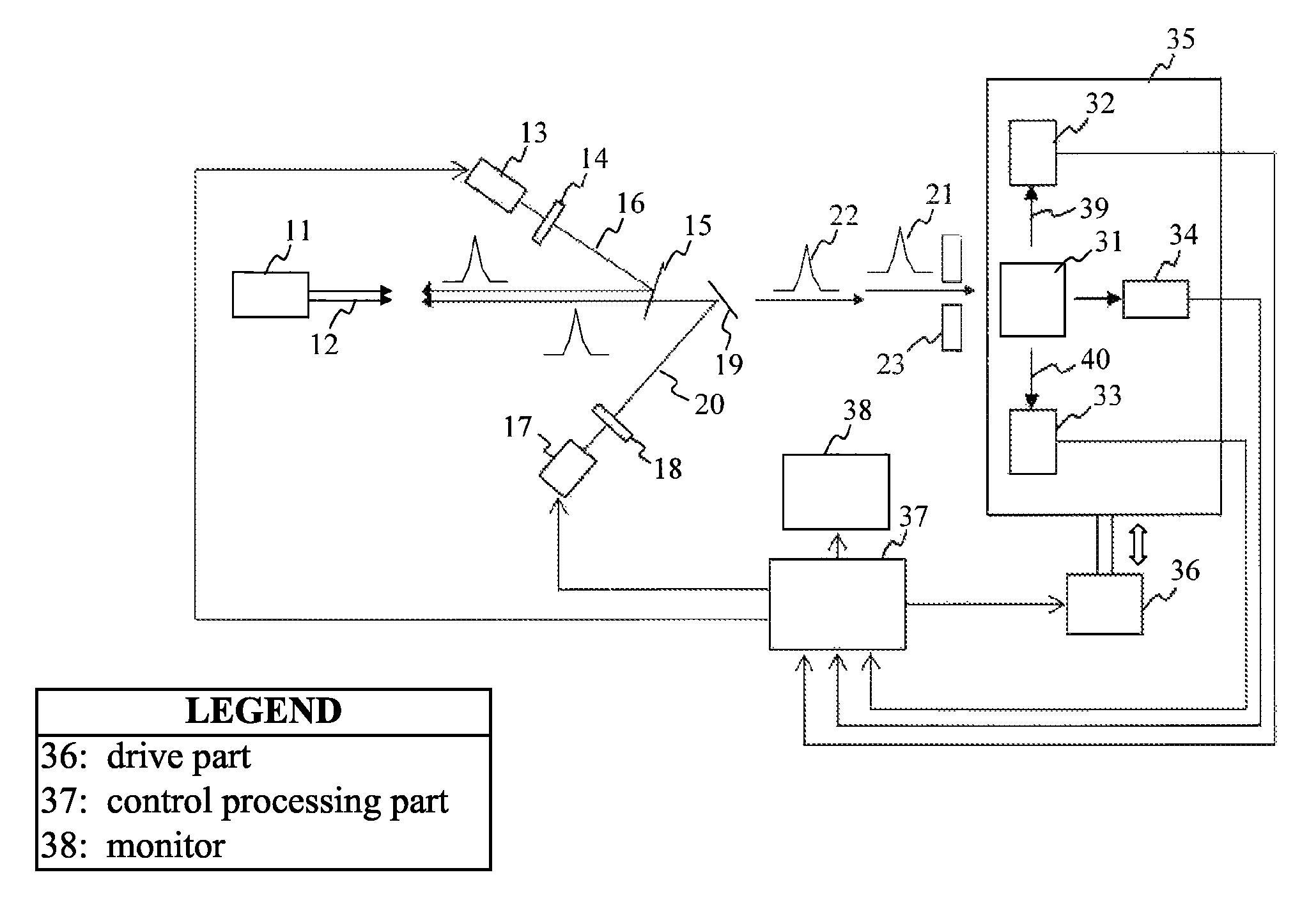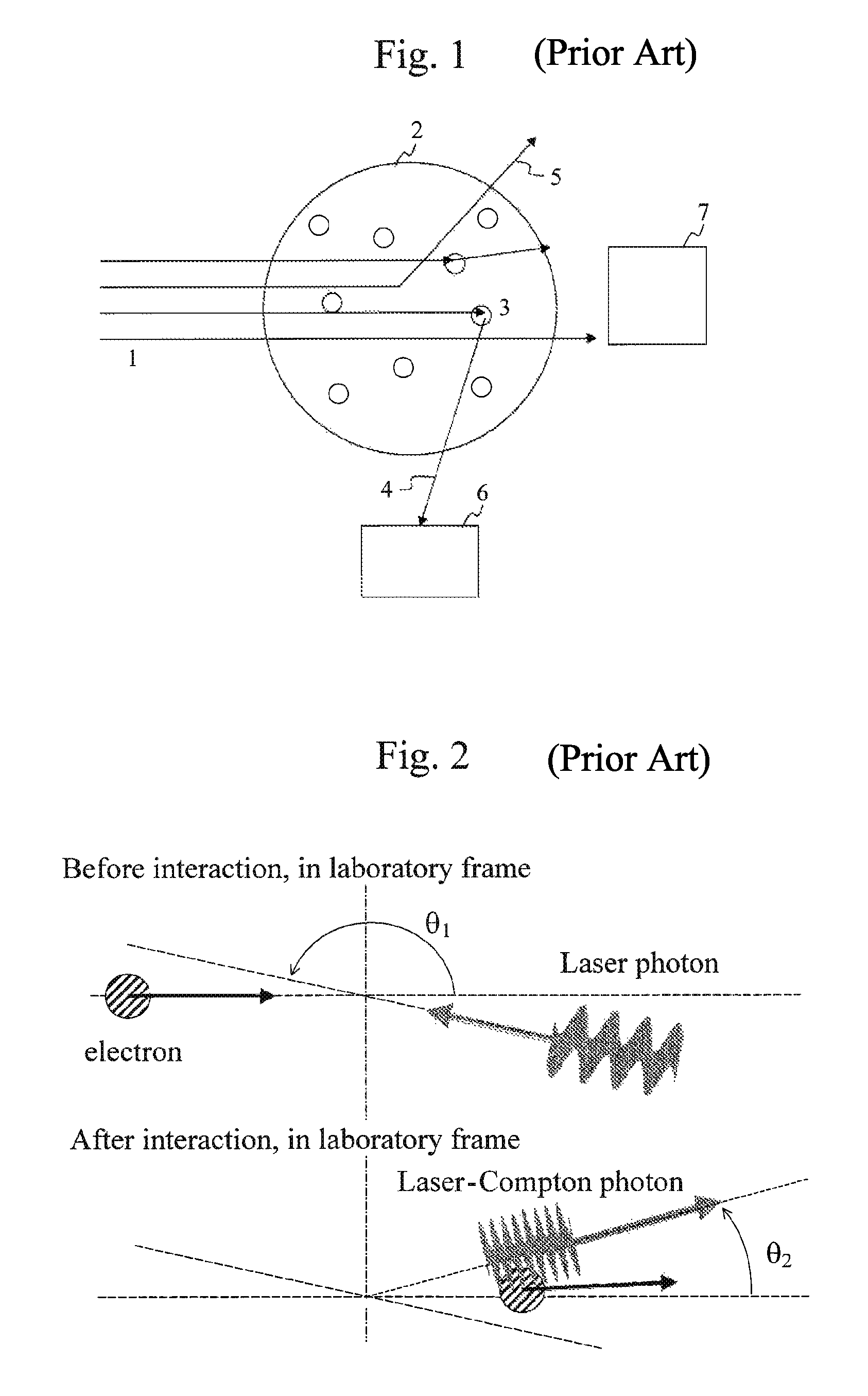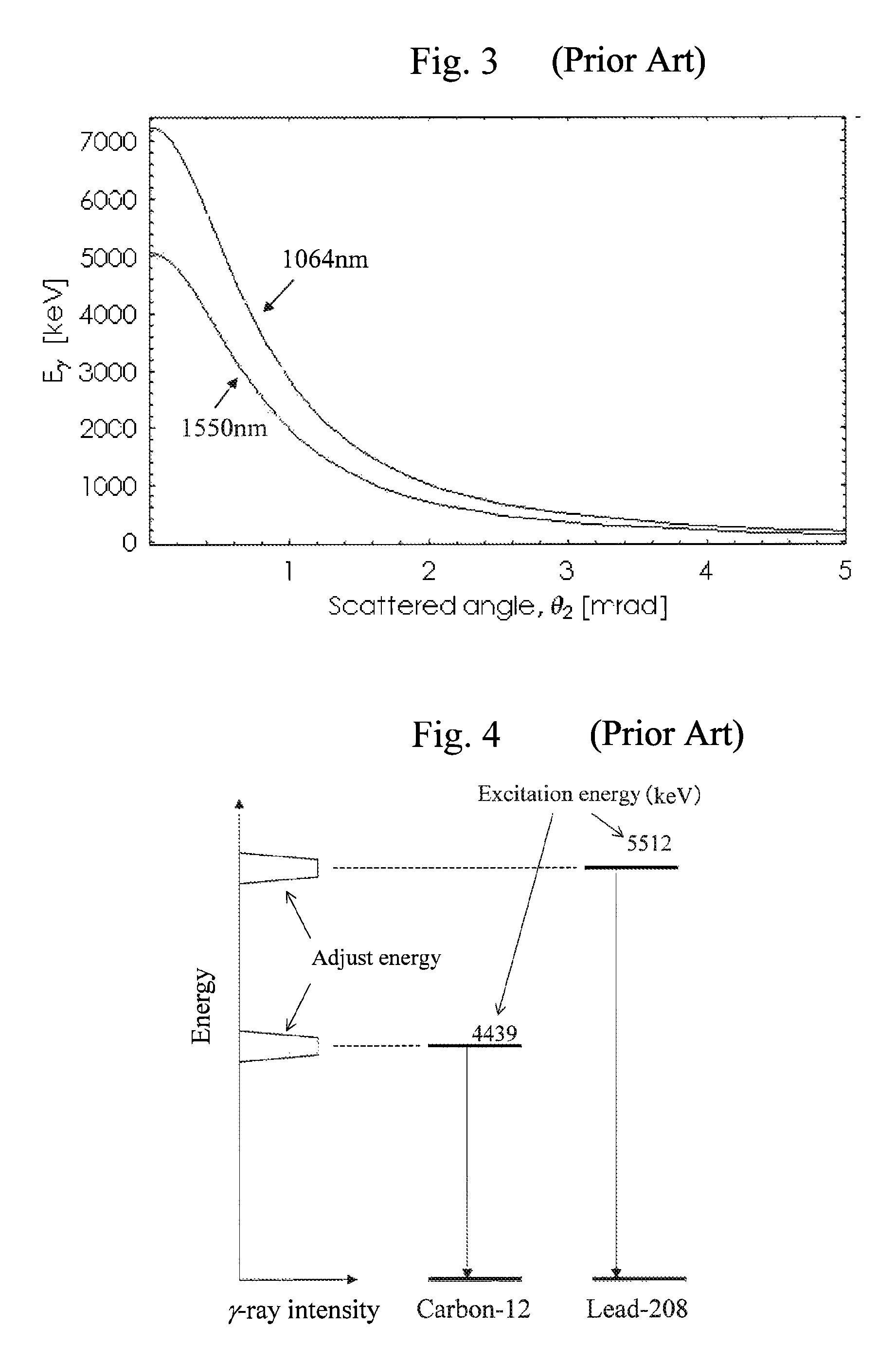Nondestructive inspection system using nuclear resonance fluorescence
a nuclear resonance and inspection system technology, applied in the direction of material analysis using wave/particle radiation, instruments, nuclear engineering, etc., can solve the problems of poor spatial resolution, low fluorescence energy, insufficient interior visualization, etc., and achieve high precision and high reliability
- Summary
- Abstract
- Description
- Claims
- Application Information
AI Technical Summary
Benefits of technology
Problems solved by technology
Method used
Image
Examples
examples
[0074]Looking at the chemical formulae for typical industrial and military-use explosive substances used in the world today, it can be seen that most explosives contain carbon, oxygen and nitrogen, and that the proportion of carbon, oxygen and nitrogen varies depending on the explosive.
[0075]The excitation levels of elements (12C, 14N, 16O) used in the detection of explosives are shown in FIG. 6. In the present example, carbon-12, oxygen-16 and nitrogen-14 are detected using two-wavelength LCS photon beams, and the abundance ratio thereof is measured. The excitation levels 6917 keV and 7117 keV of oxygen-16, 4915 keV and 7029 keV of nitrogen-14, and 4439 keV of carbon-12 are looked at. Here, by irradiating electrons of an energy of 641 MeV with lasers of wavelengths 1064 nm and 1550 nm, LCS photons of two different energies, namely 7250 keV and 5000 keV (energy spread approximately 12%), are generated, thereby exciting all of these levels. An energy spectrum of two-wavelength LCS ph...
PUM
 Login to View More
Login to View More Abstract
Description
Claims
Application Information
 Login to View More
Login to View More - R&D
- Intellectual Property
- Life Sciences
- Materials
- Tech Scout
- Unparalleled Data Quality
- Higher Quality Content
- 60% Fewer Hallucinations
Browse by: Latest US Patents, China's latest patents, Technical Efficacy Thesaurus, Application Domain, Technology Topic, Popular Technical Reports.
© 2025 PatSnap. All rights reserved.Legal|Privacy policy|Modern Slavery Act Transparency Statement|Sitemap|About US| Contact US: help@patsnap.com



